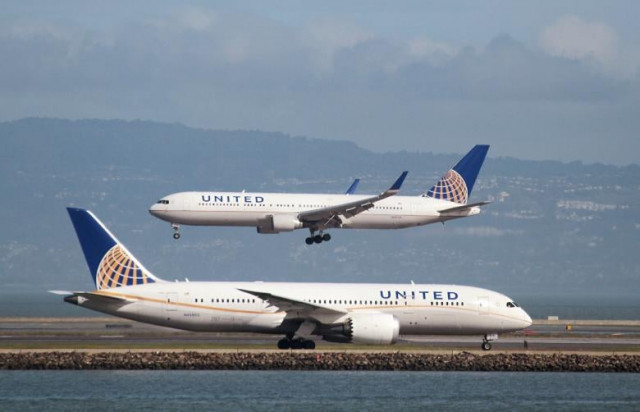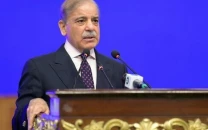US airlines are bumping passengers off flights at the lowest rate since 1995
The Transportation Department is reviewing the 'involuntary denied boarding' of the United passenger

A United Airlines Boeing 787 taxis as a United Airlines Boeing 767 lands at San Francisco International Airport, San Francisco, California, US. PHOTO: REUTERS
Compelling ticketed passengers to give up a seat can be costly, and as United has learned, damaging to an airline's reputation and share price.
United's decision to have airport security remove a man from his seat to make room for employees overshadows the broader trend in 2016, when airlines forced only six out of every 100,000 passengers to surrender seats on oversold planes.
United Airlines CEO sorry for 'horrific' passenger removal
That was the lowest rate since the government began tracking the practice in 1995, according to US Department of Transportation data.
Federal rules allow carriers to set their own criteria for selecting passengers to bump, such as check-in time, the fare paid, frequent flyer status or whether a passenger is disabled.
Passengers bumped off Alaska Airlines (ALK.N) flights got the highest average compensation of $1,605, followed by those of JetBlue, who received $1,254 on average, the Reuters analysis of Transportation Department data for 12 large US carriers found.
JetBlue spokesman Doug McGraw said the airline does not oversell flights but passengers may be bumped mainly when scheduled flights on its A321 aircraft have been moved to smaller A320 planes to accommodate needs like unplanned maintenance.
Alaska declined to comment. Other airlines did not immediately comment when asked about the analysis.
United is in the middle of the pack in terms of the rate at which it forces people to give up seats. It bumps 4.3 out of every 100,000 passengers, and pays the third-lowest average compensation rate at $559 each, according to Transportation Department data.
Hawaiian Airlines, a relatively small carrier, fares best on both measures. For 2016, it reported the lowest rate of forced bumping among the 12 largest carriers, and paid out less than $25,000 to the 49 passengers involved.
Southwest Airlines Co (LUV.N) had the highest forced bumping rate among very large carriers, taking nearly 15,000 passengers off flights last year, or 9.9 per 100,000 passengers, down slightly from 2015. Southwest paid an average of $874 per bumped passenger.
United Airlines under fire after passenger dragged from plane
Only ExpressJet, with far fewer passengers, had a higher involuntary bump rate, of 1.51 per 10,000 passengers.
The Transportation Department affirmed on Tuesday that it was reviewing the "involuntary denied boarding" of the United passenger.
Washington-based trade group Airlines for America, which represents most major US airlines, said on Tuesday it was "extremely rare" for passengers to be removed from aircraft and that carriers work to accommodate all customers in such instances.


















COMMENTS
Comments are moderated and generally will be posted if they are on-topic and not abusive.
For more information, please see our Comments FAQ